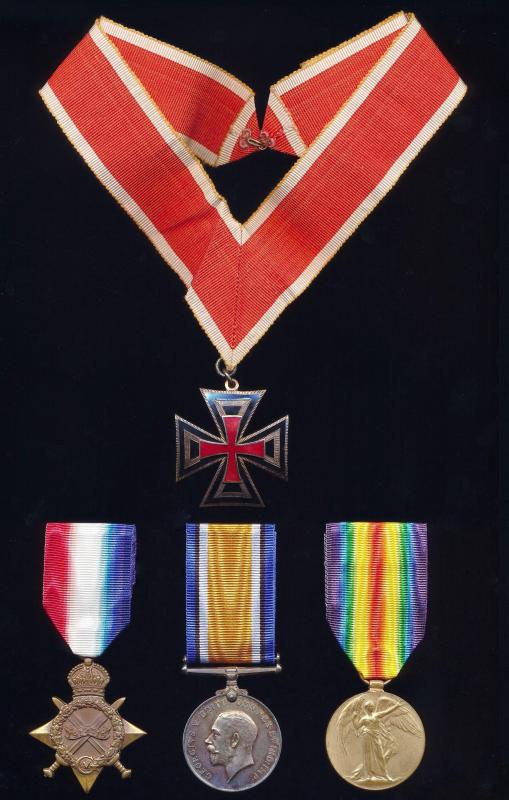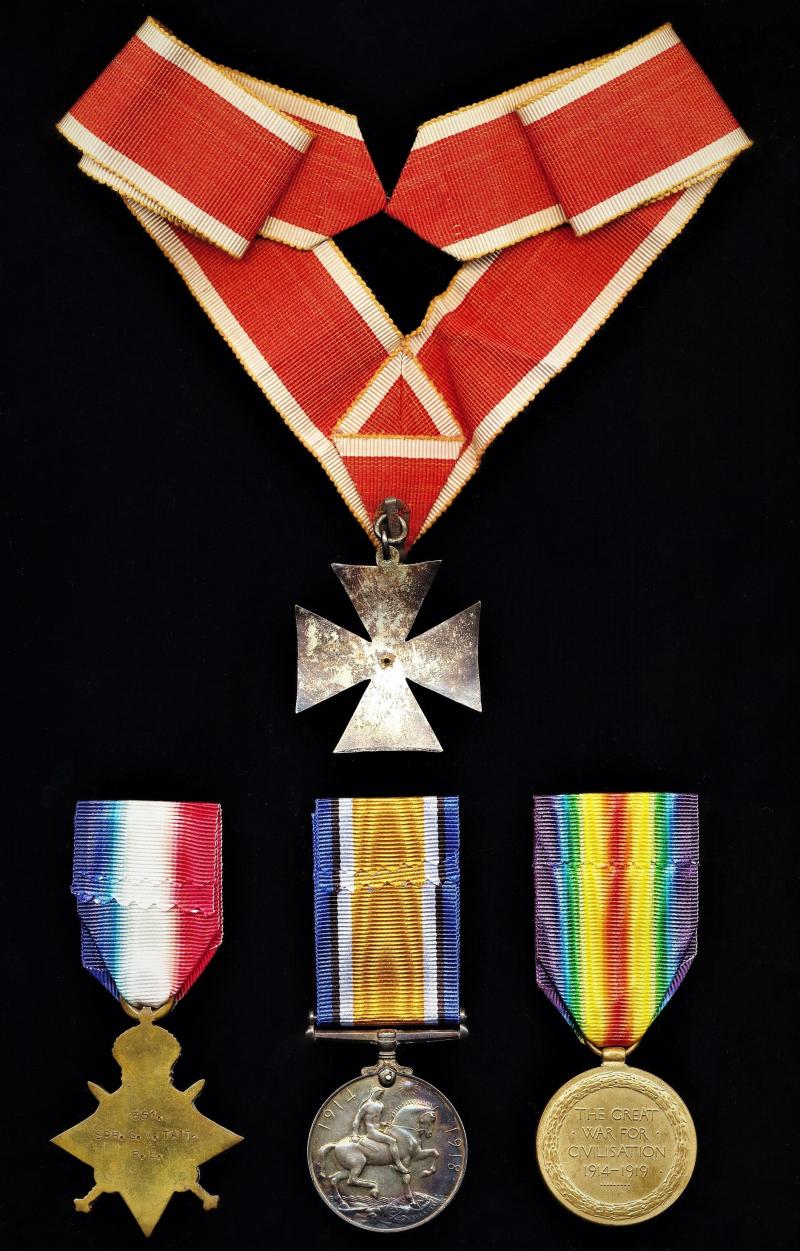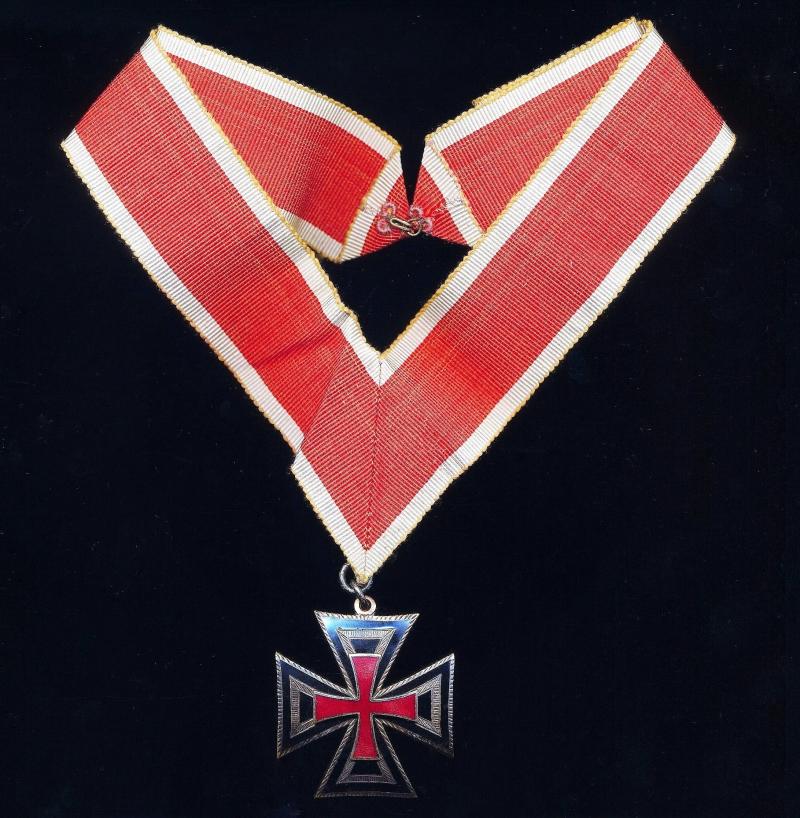A Scottish Masonic Knights Templar 'Jewel' and Great War campaign medal group of 4: Sapper George McKay Tait, City of Aberdeen (Fortress) Royal Engineers (Territorial Force)
- 1914-15 Star (351. Spr. G. M. Tait, R. E.)
- British War Medal. Silver issue (351 Spr. G. M. Tait. R. E.)
- Interallied Victory Medal (351 Spr. G. M. Tait. R. E.)
- Masonic Jewel: Scottish Knights Templar enamelled neck badge with full silk neck cravat
Important: Not that the recipient with low 3 digit regimental number is confirmed as serving with the City of Aberdeen (Fortress) Company Royal Engineers (Territorial Force)
The local Aberdeen newspaper 'The Press and Journal' carried the below 'wedding' notice in their issue of, 20 December 1917
Quote,
TAIT - HENDERSON - At the Royal Hotel, Aberdeen, on the 17th inst., by the Rev. F. J. Japp Trinity Congregational Church, Sapper George M'Kay Tait, R.E. (Fortress) B.E.F., to Margaret Ronald. elder daughter of James R. Henderson, 26 St Clair Street, Aberdeen
Unquote
Medals verification: All 3 x Great War medals confirmed as entitled per the respective medal rolls of the Royal Engineers cited below:
- 1914-15 Star: WO 329/2585 (Confirms on roll (and Medal Index Card) that recipient 'Disembarked' at France on 26 April 1915)
- British War Medal. Silver issue: WO 329/449 (shows that recipient was later re-numbered 408179)
- Interallied Victory Medal: WO 329/449 (shows that recipient was later re-numbered 408179)
George McKay Tait, second son of Henry Tait (a Drysalter & Oils Worker) & Annie Tait (nee Sutherland), was a native of the parish of St. Machar, Aberdeen, Scotland, where he was born on, 12 June 1891. The 1901 National Census for Scotland, records George, living with his parents and sibling brothers Harry Tait, and Alexander Tait, at their residence located at, 15 Huntly Street, Aberdeen. George McKay Tait is recorded to have died in, Aberdeen, Scotland, sometime during 1943
City of Aberdeen (Fortress) Royal Engineers (Territorial Force): The unit was formed in 1908 when the Territorial Force (TF) was created from the former Volunteers under the Haldane Reforms. The 1st Aberdeenshire Engineer Volunteers, which had existed since 1878, was split to form the 1st Highland Field Company and Highland Divisional Telegraph Company of the Highland Division, and the City of Aberdeen (Fortress) Royal Engineers. The latter unit consisted of a single Works Company, which continued to share its headquarters at 80 Hardgate, Aberdeen, with the Highland Field and Telegraph companies
The TF was mobilised on the outbreak of war in August 1914 and the City of Aberdeen Fortress Engineers took their place in the Scottish Coast defences
Once it was clear that the threat to Britain's coastal defences was small, six of the fortress engineer units reorganised as 'Army Troops' companies for service on the Lines of Communication of the British Expeditionary Force. One of these was the Aberdeen Fortress Company, which embarked for France from 24 April 1915 and arrived at Calais, where disembarked, on, 26 April
When the TF's RE companies were numbered in February 1917, it became 552nd (Aberdeen) Army Troops Company, RE. Thereafter, the unit served with the British Expeditionary Force on the Lines of Communication with IX Corps and was with Fifth Army at the time of the Armistice, in November 1918
The unit was demobilised in January 1920
A scarce opportunity to obtain a local Aberdonian Sapper's Great War medal group to a confirmed member of City of Aberdeen (Fortress) Royal Engineers (Territorial Force)
Condition: About EF
Code: 23230






